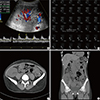Abstract
Figures and Tables
Fig. 1

Fig. 2

Journal List > J Korean Med Sci > v.29(8) > 1101605


Sangchul Yun 
https://orcid.org/http://orcid.org/0000-0002-6321-4319
Hee-Doo Woo 
https://orcid.org/http://orcid.org/0000-0002-5065-9677
Seung-Whan Doo 
https://orcid.org/http://orcid.org/0000-0002-5924-6908
Soon Hyo Kwon 
https://orcid.org/http://orcid.org/0000-0002-4114-4196
Hyunjin Noh 
https://orcid.org/http://orcid.org/0000-0002-1904-1684
Dan Song 
https://orcid.org/http://orcid.org/0000-0002-2417-9899